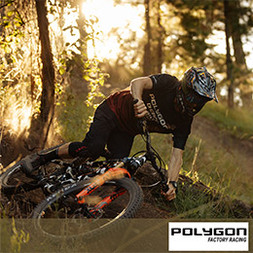Upgrading Your Mountain Bike Suspension: A Guide to Fork Selection
Enhance your mountain biking experience with our expert guide on upgrading your bike suspension. Discover how to choose the right fork for your ride, ensuring optimal performance and comfort on any terrain. Enhance your mountain biking experience with our expert guide on upgrading your bike suspension. Discover how to choose the right fork for your ride, ensuring optimal performance and comfort on any terrain.
Are you an avid mountain biker looking to push your ride to the next level? One of the most impactful upgrades you can make to your mountain bike is upgrading the suspension fork. A well-chosen fork can significantly enhance your riding experience by improving your bike's handling, stability, and control over rough terrain. However, with so many options and technical specifications, choosing the right fork can be overwhelming. In this comprehensive guide, we'll walk you through everything you need to know about mountain bike suspension upgrades, from understanding essential guidelines like the Plus 10 and Plus 2 Stanchion rules to selecting the perfect fork for trail and enduro bikes. Whether you're a seasoned rider or just starting, this guide will help you make informed decisions and elevate your mountain biking experience.
Mountain Bike Suspension Upgrades
Mountain biking is a sport where every component of your bike plays a crucial role in your ride's overall performance and enjoyment. Among these components, the suspension fork holds a special place. The fork absorbs impacts, provides stability, and ensures smooth handling over various terrains. Upgrading your suspension fork is more than just swapping out components; it's about fine-tuning your bike to match your riding style and the trails you love.
Before diving into the technical details, it's essential to understand why suspension upgrades matter. A suitable fork can make climbing easier, descending smoother, and cornering more precise. It directly affects your bike's geometry, which in turn influences everything from how your bike feels to how it handles on different types of trails.
This guide aims to demystify the process of upgrading your mountain bike suspension. We'll explore key rules and principles that will help you make the best decisions for your bike. So, let's get started on this journey to making your mountain biking experience safer, more enjoyable, and ultimately more thrilling!
Understanding the Plus 10 Rule
The first critical guideline in upgrading your mountain bike suspension is the Plus 10 Rule. This rule suggests that when you're looking to increase the travel of your front fork, the optimal increase is 10 millimeters. Why 10mm? This careful adjustment ensures that your bike's factory geometry is maintained. Geometric changes can significantly alter your bike's handling, balance, and overall performance, and staying within this limit helps preserve those essential characteristics.
Let's consider an example: if you have a mountain bike like the Siskiu D7 SE, which comes with a 120mm travel fork, the ideal upgrade would be to a 130mm travel fork. This incremental increase allows you to gain some additional absorption capacity without drastically altering how your bike rides. It ensures that your bike retains good balance and handling, essential for both rigorous climbing and technical descents.
Following the Plus 10 Rule helps in achieving an upgrade that enhances your bike's performance while maintaining its structural integrity. Going beyond this recommended increase can lead to a significantly slacker head angle, longer axle-to-crown height, and a higher bottom bracket – all of which could result in a less stable and less enjoyable ride.
Adhering to the Plus 10 Rule when upgrading fork travel is a pragmatic approach that ensures you’re not compromising your bike’s built-in geometry, thereby maintaining a balanced and controlled ride.
Applying the Plus 2 Stanchion Rule
Another vital guideline to consider when upgrading your mountain bike fork is the Plus 2 Stanchion Rule. This rule pertains to the diameter of the fork's stanchions, which are the tubes that slide in and out of the fork's lower legs, providing the actual suspension movement. The guideline advises that any increase in the stanchion diameter should be limited to 2 millimeters. Exceeding this limit can negatively affect your bike's weight distribution and handling characteristics.
For instance, if you’re riding a Siskiu D7 SE that originally comes with 32mm stanchions, you have the option to upgrade to sturdier 34mm stanchions. The advantage of larger stanchions lies in increased stiffness, which significantly enhances cornering control and stability on rough trails. However, it's crucial to remember that the flip side is a slight increase in weight, which might affect your climbing efficiency.
The Plus 2 Stanchion Rule ensures that you get improved fork performance without drastically changing your bike's handling or adding unnecessary weight. This balance is essential for maintaining the agility and responsiveness of your bike while gaining the benefits of better suspension performance.
Whether you're a trail rider or an enduro enthusiast, adhering to this rule will help you make an informed decision when choosing your bike's suspension components. It’s a simple yet effective guideline that ensures a harmonious balance between performance and practicality.
Fork Selection for Trail Bikes
Trail bikes offer a versatile riding experience, balancing climbing efficiency with solid descending capabilities. When selecting a fork for a trail bike, such as the Siskiu T8, which typically features a 140mm front fork, it's essential to follow the Plus 10 Rule and the Plus 2 Stanchion Rule to maintain optimal performance.
For the Siskiu T8, an ideal upgrade could be moving to a 150mm fork. This slight increase in travel will provide extra cushioning over rough terrain without compromising the bike's geometry. The stanchion diameter for trail bikes like this can range from 34mm to 36mm. Options such as the Marzocchi Z1 or the RockShox Lyric are excellent choices, depending on how aggressively you ride. These forks offer robust performance, ensuring that you can tackle technical descents confidently while still enjoying efficient climbs.
The balance between travel and stanchion diameter in trail bikes is crucial. A well-chosen upgrade can significantly enhance your riding experience by offering improved control and comfort. However, it’s important to ensure that the upgrades don't skew the bike’s geometry too much, as this could lead to undesirable handling characteristics.
When selecting a fork for your trail bike, consider the type of terrain you'll be riding most frequently. If you often tackle technical, rocky descents, a slightly burlier fork with thicker stanchions might be beneficial. Conversely, if you prioritize climbing and longer rides, a lighter fork with moderate travel could be more suitable.
Fork Selection for Enduro Bikes
Enduro bikes are designed for aggressive downhill performance while still being capable climbers. They typically feature longer travel forks and beefier components to handle the demanding terrain. When upgrading the fork on an enduro bike like the Colossus N9, which boasts 170mm of travel, the guidelines shift slightly to accommodate the bike's intended use.
For enduro bikes, the recommended increase in travel can go up to 20mm, allowing for a maximum of 190mm. This increase provides greater impact absorption necessary for high-speed descents and rough trails. When it comes to stanchion diameter, 38mm stanchions are the standard for enduro forks. These larger stanchions offer exceptional stiffness and durability, which are crucial for maintaining control on brutal descents.
Forks such as the RockShox Zeb and the SR Suntour Duralux 38 are excellent candidates for enduro bikes. These forks are built to withstand the rigors of downhill riding while maintaining adequate climbing performance. The key is to find a balance that doesn't overly compromise the bike’s agility and handling.
When upgrading the suspension on an enduro bike, the primary focus should be on performance during descents. The additional travel and thicker stanchions will provide the necessary support and control, allowing you to push your limits on challenging trails. However, it's still important to ensure that the bike remains balanced and responsive, as overly aggressive upgrades can lead to a cumbersome ride.
Making the Right Suspension Upgrades: Enhance Your Ride, Your Way
Upgrading your mountain bike suspension is an exciting way to enhance your riding experience, but it requires careful consideration of various factors to achieve the best results. The Plus 10 Rule and Plus 2 Stanchion Rule provide valuable guidelines that help maintain your bike's geometry and performance while allowing for meaningful improvements.
Whether you're upgrading the fork on a trail bike or an enduro bike, it's essential to consider the type of terrain you’ll be riding most frequently and how you want your bike to perform. Smaller, incremental upgrades in travel and stanchion diameter can offer significant benefits without compromising your bike's handling and agility.
By understanding and applying these principles, you can make informed decisions that elevate your mountain biking experience. Remember, the goal of any upgrade is to enhance your ride, making it more enjoyable, safer, and better suited to your riding style. So, whether you're tackling technical descents, flowing singletracks, or epic climbs, the right suspension fork can make all the difference. Happy riding!
Leave a comment
- Training Tips for a Beginner Cyclist
- Industry Reviews
- Mountain Bikes Buyer's Guide
- Polygon Siskiu T8 vs Collosus N9
- Superior XP919 Review: An Affordable Cross Country Marvel
- Mountain Bikes vs. Road Bikes: Which Is Safer for Your Cycling Adventures?
- Drop bar Buyer's Guide
- Are Electric Bikes Safe? Unpacking the Truth for New Riders
- Commuter Bike Guide
- Essential Bike Accessories for Every Cyclist
- Ultimate Guide to Buying Cycling Gear Online
- Is a Mountain Bike Good for Commuter Use? Exploring Versatility and Performance
- Is It Worth Buying an Ebike? Weighing the Pros
- Pinned With Polygon | The gang goes to Crankworx
- EWS #5: Burkville
- Sustainable Strategies
- Worth-it Blogs EP#3: Budget Hardtail Upgrades
- Worth-it Blogs EP#2: Hardtail Hitters
- The Bicycles Online's Company Fitness Challenge
- Bikes Online Does Sea Otter
- Choosing the Right Mountain Bike: Polygon Siskiu T6 vs. T9
- The Amazing Do-It-All Trail Bike: Polygon Siskiu T8 Review
- Polygon Siskiu D7 vs T7: Finding the Best Bike
- Guide to Polygon Siskiu T Mountain Bikes
- Upgrading Your Mountain Bike Suspension: A Guide to Fork Selection
- Bikepacking 101
- Fox vs. Rock Shox: A Comprehensive Comparison of Mountain Bike Suspension Giants
- 27.5 vs 29 Mountain Bike Wheels: An In-depth Comparison
- The Ultimate Guide to Choosing the Right Gravel Bike
 USA
USA AUS
AUS









